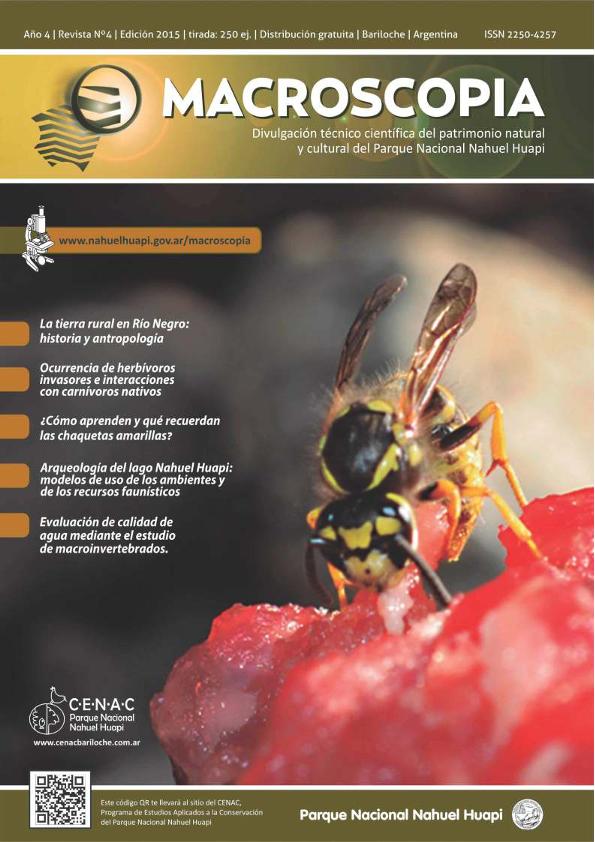Artículo
La intención de este artículo es presentar los resultados preliminares de un proyecto de investigación interdisciplinaria aplicada que se viene desarrollando en el marco de un convenio firmado por la Universidad Nacional de Río Negro y la Legislatura de la Provincia de Río Negro desde agosto de 2014. El objetivo general del proyecto es reponer el contexto histórico y antropológico de los conflictos emergentes que cuestionan la situación dominial de la tierra en Río Negro, a partir de analizar la relación entre la distribución desigual de tenencia y acceso a tierras y recursos naturales y la configuración de ciudadanía en la provincia que conllevan efectos sociales tanto en el presente como en el futuro de la población rionegrina. En este artículo introduciremos, en primer lugar, la metodología de investigación implementada para pasar luego a los resultados preliminares que se agrupan en tres ejes. Comenzaremos con la descripción de las características de las denuncias presentadas ante la Comisión Investigadora para el Relevamiento de Transferencias de Tierras Rurales de la Legislatura provincial entre 2012 y 2014 para luego vincularlas con problemáticas de orden general. A continuación, abordaremos los procesos históricos que inciden en la configuración de accesos diferenciales a la tierra en el presente. Finalmente, presentaremos el análisis hermenéutico de dos de las leyes provinciales que deben aplicarse en los conflictos actuales: la Ley 279 que establece el Régimen de Tierras Fiscales y la Ley 2.287 denominada Ley Integral del Indígena. The aim of this article is to present the preliminary results of an applied interdisciplinary research project which is being developed subjected to an agreement between the National University of Río Negro and the Legislature of the Province of Río Negro since August 2014. The overall objective of the project is to settle both the historical and anthropological contexts of the emerging conflicts related to land in Río Negro, by analyzing the relationship between the unequal distribution of tenure, land and natural resources that result in an uneven citizenship in the province. This has social effects both in the present and the future of the Río Negro population. In this article we introduce, first, the research methodology implemented in the project and then move to the preliminary results which are grouped in three lines. First, we start with the description of the nature of the demands received by the Commission for the Research on the Transfer of Rural Land at the Legislature of Río Negro between 2012 and 2014 and then link them to issues of a general nature. Then, we will address the historical processes that influence the differential accesses to land in the present. Finally, we present the hermeneutical analysis of two provincial laws to be applied in today's conflicts: Law 279 which establishes the regime of Government Lands and the so called Indigenous integral Law 2,287.
La tierra rural en Río Negro: historia y antropología
Fecha de publicación:
09/2015
Editorial:
Parque Nacional Nahuel Huapi
Revista:
Macroscopia
ISSN:
2250-4257
Idioma:
Español
Tipo de recurso:
Artículo publicado
Clasificación temática:
Resumen
Palabras clave:
Tierra Rural
,
Historia
,
Antropología
,
Río Negro
Archivos asociados
Licencia
Identificadores
Colecciones
Articulos(IIDYPCA)
Articulos de INST. DE INVESTIGACIONES EN DIVERSIDAD CULTURAL Y PROCESOS DE CAMBIO
Articulos de INST. DE INVESTIGACIONES EN DIVERSIDAD CULTURAL Y PROCESOS DE CAMBIO
Citación
Cañuqueo, Eliana Lorena; Kropff Causa, Laura; Pérez, Pilar María Victoria; Wallace, Julieta ; La tierra rural en Río Negro: historia y antropología; Parque Nacional Nahuel Huapi; Macroscopia; 4; 4; 9-2015; 2-6
Compartir




